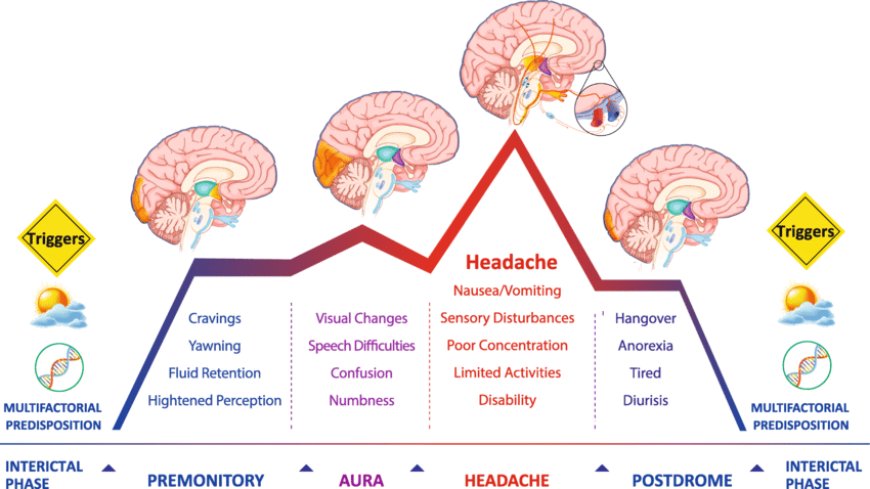Cyclic Migraines

Introduction :
Cyclic Migraines might sound like a puzzle, but let's piece it together in simple language for our 10-year-old readers. In this article, we will explore what Cyclic Migraines are, their signs and symptoms, causes, risk factors, diagnostic tests, treatments, complications, and prevention techniques, with examples from India.
Signs and Symptoms:
Cyclic Migraines are a type of severe headache that likes to visit again and again. Some common signs and symptoms include:
- Throbbing or pulsating pain in the head.
- Sensitivity to light or sound.
- Feeling nauseous or vomiting.
What is Cyclic Migraines? :
Cyclic Migraines are a special kind of headache that happens in episodes. It's like a headache that keeps coming back like a boomerang.
How Is Cyclic Migraines Classified? :
Cyclic Migraines are classified based on how often they come back and how long they last. This helps doctors understand how to treat them better.
Causes and Triggers:
The exact reasons why some people get Cyclic Migraines are not fully understood, but they can be triggered by certain things. For example:
- Eating too much chocolate or cheese (which sounds fun but not for the head!).
- Not getting enough sleep or sleeping too much.
- Being under stress, like when you have lots of homework or exams.
Risk Factors with Examples:
Some factors can make a person more likely to have Cyclic Migraines. For example:
- If someone's parents or relatives have migraines, they might be at a higher risk too.
- Skipping meals or not eating healthy food can make migraines more likely.
Types of Cyclic Migraines:
There are different types of Cyclic Migraines based on how often they happen. Some common types are:
- Episodic Migraines: These come and go but not too frequently.
- Chronic Migraines: These are the frequent visitors that linger around more often.
Diagnostic Tests and Their Use:
Doctors use different tests to diagnose Cyclic Migraines and understand their triggers. Some common tests are:
- Medical History: The doctor will ask questions about the headaches and any other health problems.
- MRI (Magnetic Resonance Imaging): This is like taking pictures of the brain to see if everything looks okay.
Treatments:
The treatment for Cyclic Migraines depends on how often they come and how severe they are. Some common treatments are:
- Pain Relief Medicines: Doctors might prescribe special medicine to help with the headache pain.
- Lifestyle Changes: Simple things like eating healthy, sleeping well, and managing stress can help.
Complications of Cyclic Migraines:
Cyclic Migraines can be tough to deal with and might cause problems like:
- Missing school or fun activities because of the headaches.
- Feeling tired or cranky from dealing with the pain.
Prevention Techniques:
To prevent Cyclic Migraines, you can try:
- Eating a balanced diet with lots of fruits and vegetables.
- Getting enough sleep and rest.
- Taking short breaks during study or screen time to relax your eyes and mind.
Remember, Cyclic Migraines can be like uninvited guests, but with the help of doctors, a healthy lifestyle, and a positive attitude, you can show them the door! If you ever experience severe headaches or know someone who does, don't forget to tell an adult so they can help you find the best way to tackle them. You're a brave superhero, and together, we can conquer those migraines!
What's Your Reaction?
 Like
0
Like
0
 Dislike
0
Dislike
0
 Love
0
Love
0
 Funny
0
Funny
0
 Angry
0
Angry
0
 Sad
0
Sad
0
 Wow
0
Wow
0








































































